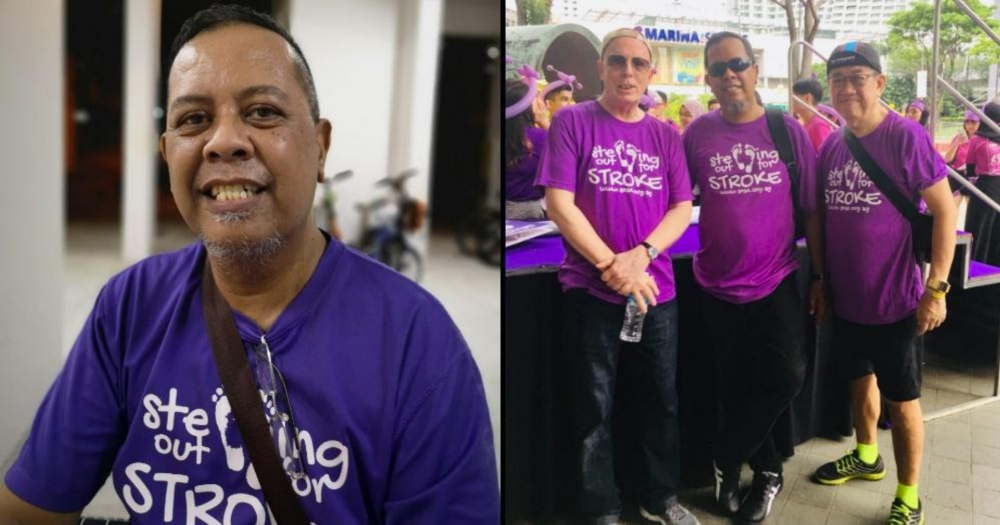The brain — a wonderful and mysterious organ that continues to baffle doctors and scientists to this day. How does something so small control a body 40 times its size? How does it function just like a supercomputer?
What happens to someone when part of their brain is damaged by a stroke? That’s what we have come to find out from Rosli Hadi, a 56-year-old stroke survivor who suffered a haemorrhagic stroke (due to bleeding in the brain) in his sleep on September 29, 2016.
It’s been over four years since he had that stroke and for all intents and purposes, he looks like any other man on the street, except for one rather curious difference: Rosli cannot run or jump.
It’s not a question of fitness. Rather, Rosli cannot comprehend the action of landing on his feet. In other words, his brain can’t tell his feet to run or jump.
But first, in case you’re wondering what is a stroke...
Blood carries oxygen and nutrients through your brain to help it function. When the blood flow in the brain’s blood vessels is disrupted, a stroke occurs, causing brain damage.
There are two main types of stroke.
The first is an ischaemic stroke. This is the most common type of stroke.
It occurs when an artery is blocked — either by a blood clot (known as an embolism) or fatty plaque (known as a thrombosis) — and cuts off blood supply to certain parts of the brain.
The second is a haemorrhagic stroke.
It occurs when a blood vessel in the brain bursts, causing bleeding in the brain.
Not all strokes are the same. Depending on the location of the damage in the brain, a stroke can manifest with different symptoms and signs such as loss of strength on either side of the body, difficulty speaking, and drooping of one side of the face.
With each minute that passes in the first few hours after a stroke strikes, more and more brain tissue dies. It is imperative to recognise the early signs because prompt medical treatment has been proven to help in recovery and reduce the permanent impact of a stroke.
In order to spot the early warning signs, you need to think F.A.S.T:
- Face drooping
- Arm weakness
- Speech difficulty
- Time to call 995

Don’t wait for a stroke to happen. You can actually STOP a stroke because 80 per cent of strokes can be prevented by making lifestyle changes and treating health conditions that increase one’s risk of a stroke:
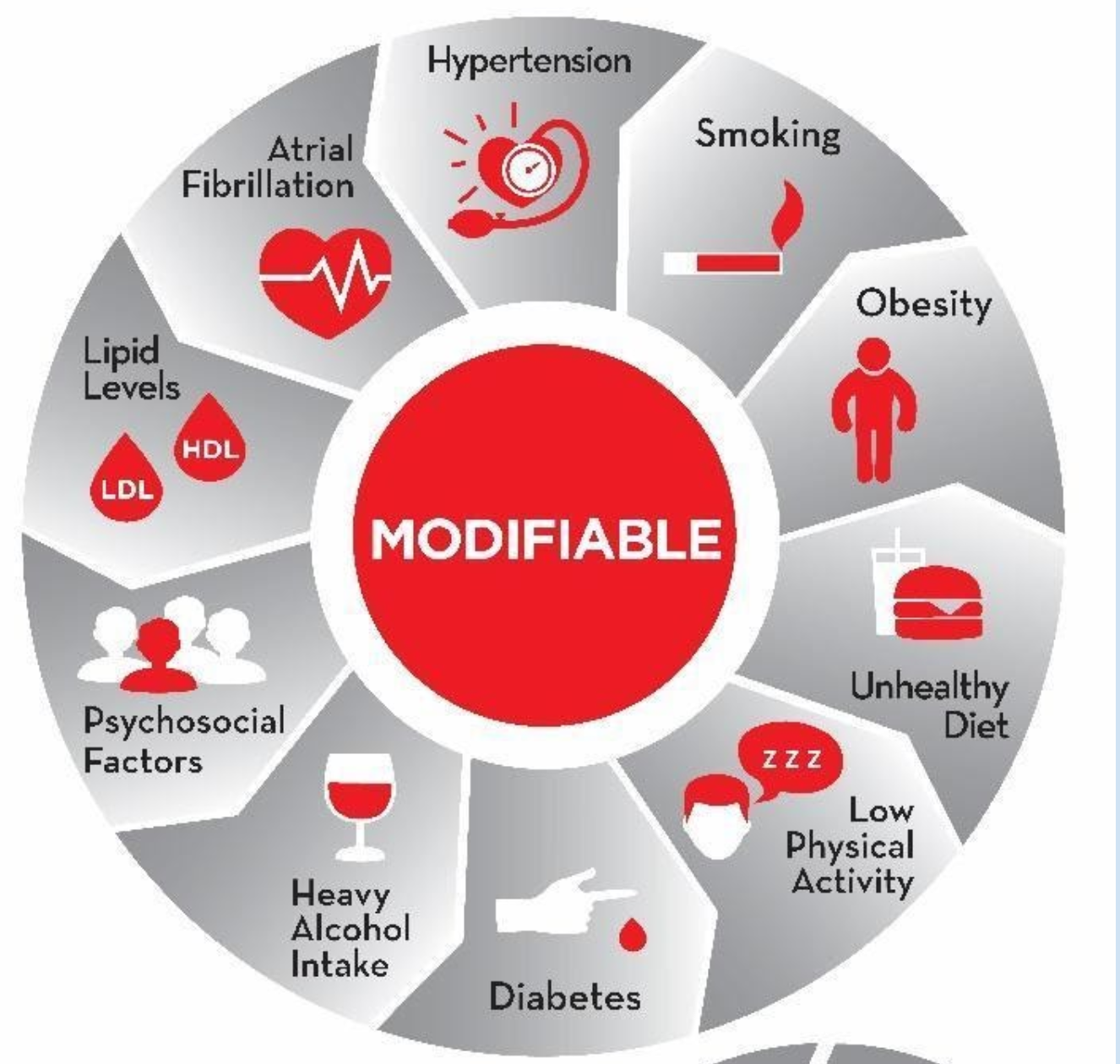
- Knowing the common risk factors of stroke and doing something about them, e.g quitting smoking, managing hypertension and cholesterol levels, eating healthily and exercising regularly, and keeping stress levels in check.
- Undergoing regular health screenings to know and manage your risk factors.
- Reading up on stroke prevention measures.
What happened on September 29, 2016?
It was in the middle of the night when Rosli woke up. He glanced over at his clock — 1am. He felt uncomfortable.
He really needed to go to the toilet, he thought, as he dragged himself off the bed. That was when he realised he couldn’t move his left arm; it was as if a wooden block was hanging off his shoulder.
Rosli could not comprehend what was happening — he was in a daze and he really needed to relieve himself. When he was done in the toilet, another strange thing happened — he could not move.
Calling out to his wife, he asked her to help him out of the toilet and back to bed.
“Because I was going to work the next day, normally people will think it’s nothing [and] go back to sleep,” he says.
On hindsight, it was extremely dangerous to head back to back sleep after he first noticed that his arm was weak, Rosli says, adding that he could have gone into a coma.
If you notice symptoms of a stroke, it is important to call the ambulance immediately. Do not go back to sleep, he urges.
Rosli woke up again — thankfully — at 6am, still without feeling in his left arm. His wife called for an ambulance immediately and he was conveyed to Khoo Teck Puat Hospital.
In the hospital, everything happened in a blur of noise and confusion. Soon, Rosli lost consciousness.
When he woke up, his family broke the news: He had suffered a stroke due to bleeding in the brain and could not get out of bed.
There’s no way to find out exactly why a blood vessel in Rosli’s brain burst.
However, one likely reason is his prolonged refusal to take his hypertension medication. Hypertension is a known risk factor for causing blood vessels to rupture, which can lead to bleeding in the brain.
The road to recovery is not easy but possible
Recovery for stroke survivors depends on how fast they get access to treatment and how badly the brain was affected.
Some stroke survivors do not feel they can get better, says Rosli.
“They will think that’s it. Full stop...it’s no point, they can’t walk. That’s not true.”
Rosli spent a total of 51 days in the hospital, the first two weeks of which was devoted to learning to walk again.
“I saw the people around in the ward, they were discharged when they could walk. So I needed to do something for me to stand and walk again. I need to do something. That was in my mind.”
Teaching the brain how to walk
A lot of rehabilitation work after a stroke is getting the brain to “re-learn” things like walking and speaking.
To re-learn the act of walking, Rosli’s therapist asked him first to sit, then stand. He was puzzled at such a simple request.
The therapist then brought out a mirror and said, “Uncle, you sit down and stand up while looking in the mirror.”
Rosli did just that and realised, with a jolt, that the figure in the mirror struggled to get up from the chair. That was when he learned:
“Your brain can learn how to walk again by looking at yourself.”
Walking seems like such a simple thing for most of us but stroke survivors like Rosli understand just how much of our daily actions are taken for granted.
“You never think [about] how you walk right? Because it’s natural!”
Having a stroke is like having your mind switched off, he adds. Your body doesn’t automatically sit, stand, or stop walking when your mind wants to.
He also admits, with a chuckle, that his fellow mates in the hospital ward would challenge each other to see who could get themselves discharged faster.
This camaraderie and support network is very important because they can help patients recover faster.
Rosli and his group of fellow ward mates would eat and chat together like friends at a coffeeshop.
“We don’t feel like we’re patients, but we’re like gathering outside like that. That kind of environment contributed to my recovery because I noticed that among the five of us, we [were] discharged within one to two days of each other.”
On the day Rosli was discharged, he walked out of Khoo Teck Puat Hospital with the aid of a walking stick. One week of outpatient therapy later, the walking stick became obsolete.
Today, Rosli is able to walk, climb stairs independently, and do most things that others can do except run and jump.
“You know that when you run, both your feet are off the ground? So my brain tells me, ‘You can jump, but I don't know how to land.’ It will inform me that it’s not safe.”
But that has not stopped him from volunteering with the Singapore National Stroke Association and attending their many group outdoor activities.
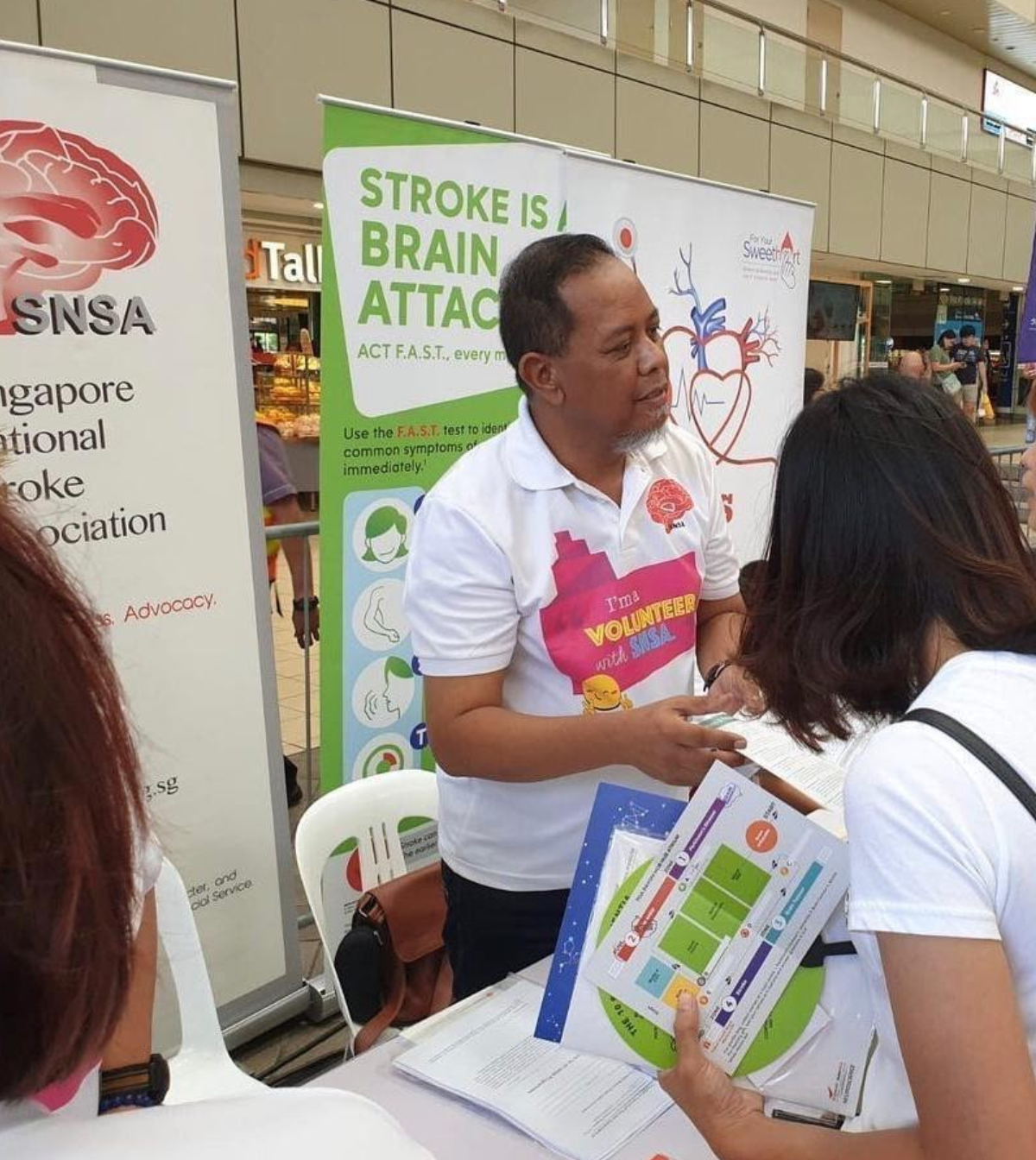 Photo courtesy of Rosli Hadi.
Photo courtesy of Rosli Hadi.
Befriending and supporting other stroke patients
After his discharge, Rosli’s doctor came to him with a request: To return to the ward and share his journey with other stroke patients to encourage them.
He was skeptical at first, but his doctor explained that a stroke survivor’s experience can serve as motivation for other patients.
Over time Rosli realised that what his doctor said was true. The stroke patients whom he interacted with were very interested in learning how he managed to recover (almost) completely.
Today, Rosli is a living example of how stroke survivors can live as normal a life as possible.
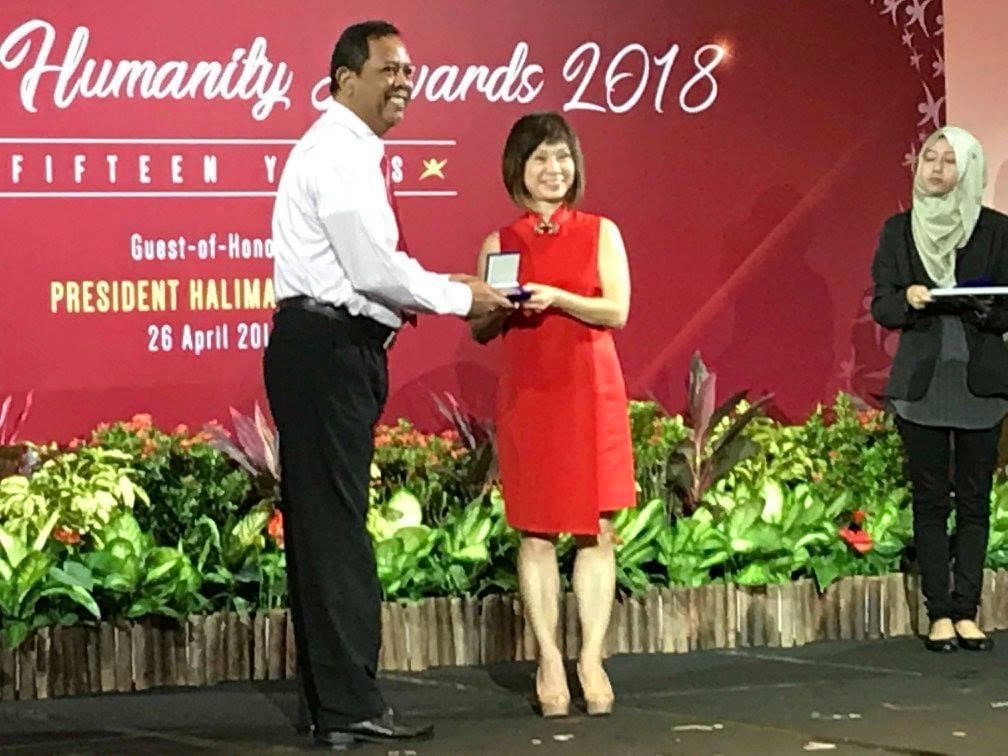 Rosli receiving the Healthcare Humanity Award for his befriending work at Yishun Community Hospital. Image courtesy of Rosli Hadi.
Rosli receiving the Healthcare Humanity Award for his befriending work at Yishun Community Hospital. Image courtesy of Rosli Hadi.
He is also adamant that stroke survivors can recover and he shares his story to encourage them whenever he can.
“I just want to say: Don't lose hope. There's always a light at the end of the tunnel. It’s not the end.”
Remember, a stroke is an emergency. If you spot signs of a stroke, call 995 immediately for an ambulance. Fast discovery helps recovery.
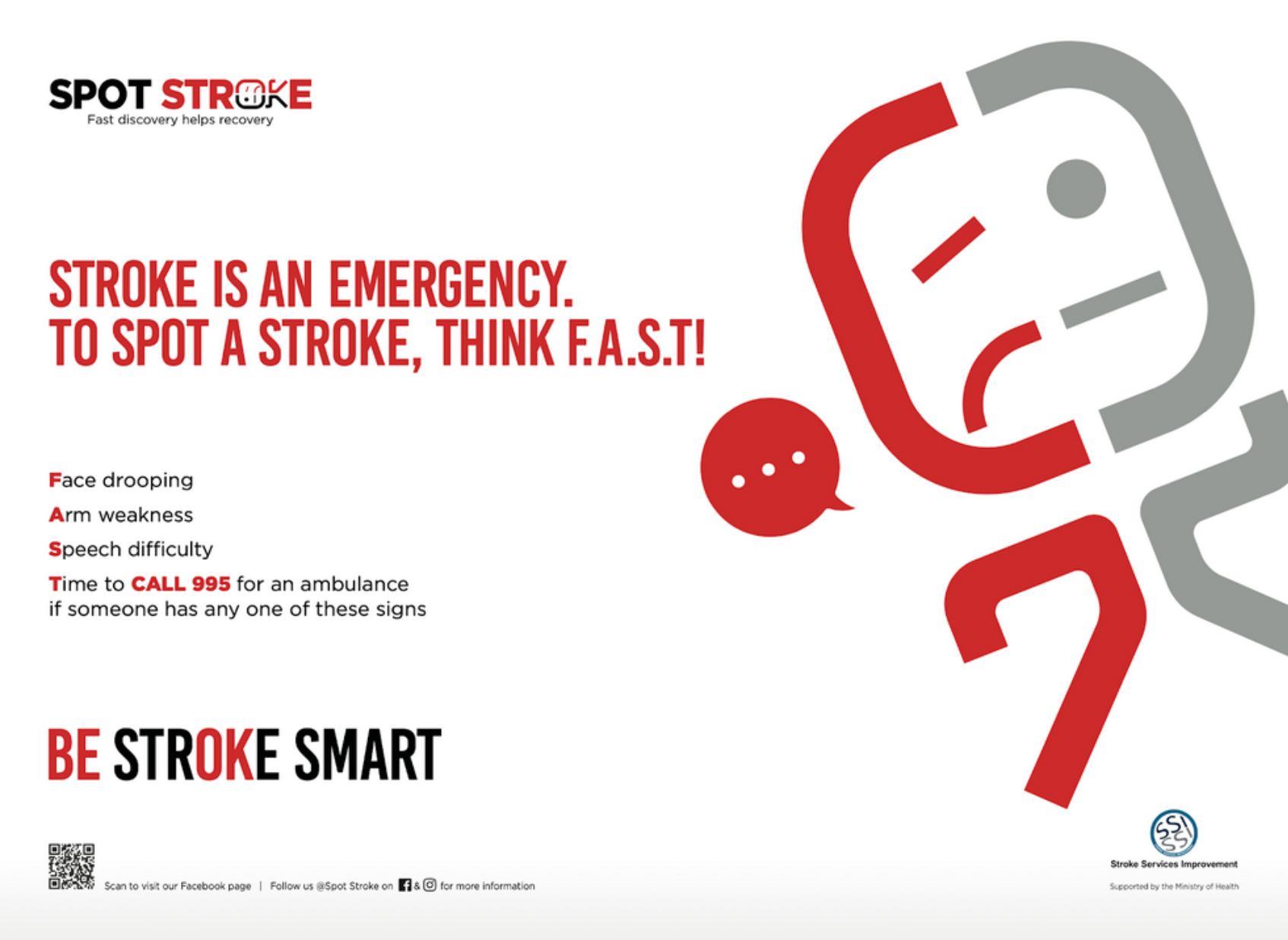
Thanks to this sponsored article by Stroke Services Improvement, this writer learned something cool about the brain as well as the warning signs of a stroke. Top images by Joshua Lee and Rosli Hadi.
If you like what you read, follow us on Facebook, Instagram, Twitter and Telegram to get the latest updates.
